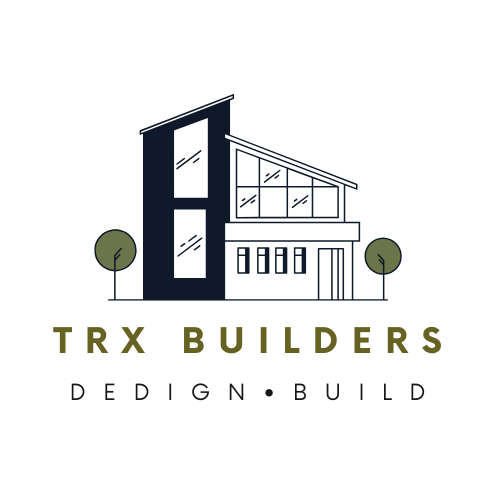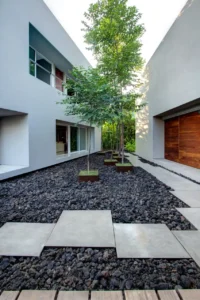If you’ve been considering adding an Accessory Dwelling Unit (ADU) to your property, you’re not alone. ADUs are becoming increasingly popular for a variety of reasons, including extra living space for family members, rental income opportunities, or simply as a way to maximize the value of your property. But, like any major construction project, one of the first questions on your mind is probably, “How much does it cost to build an ADU?”
The cost of building an ADU can vary widely based on factors such as size, design, location, and the materials used. While the prospect of a custom-built, efficient living space sounds appealing, it’s important to understand the factors that influence the cost. Let’s dive in and explore what goes into an ADU construction project, what to expect in terms of cost, and how to budget for such a project.
What is an ADU?
Before we break down the costs, let’s quickly define what an ADU is. An ADU is a small, secondary dwelling unit built on the same lot as a primary residential home. ADUs can take many forms, from garage conversions and basement suites to standalone units like tiny homes or modular structures. The beauty of an ADU is its flexibility—it can be used for a variety of purposes, including a guest house, home office, or rental unit. ADUs are typically smaller than the main residence, but they are highly functional and versatile.
Key Factors That Influence the Cost of Building an ADU
Several factors will affect the cost of building an ADU. These include the size, design, location, materials, and labor costs. Below is a breakdown of each factor to help you get a clearer picture of what to expect when planning your ADU construction.
1. Size and Layout
As with most construction projects, the size of the ADU will be one of the biggest determinants of cost. A smaller, simple one-bedroom ADU will cost less than a larger two-bedroom unit with a complex layout. On average, a one-bedroom ADU can range from 400 to 800 square feet, while a two-bedroom unit may be 800 to 1,200 square feet.
The layout is also a critical aspect to consider. A well-planned layout with efficient use of space can reduce costs by minimizing unnecessary structural work and optimizing the use of available space. More elaborate floor plans, additional rooms, or customized features will increase the overall cost.
2. Design and Customization
The level of design complexity and customization you choose will also affect the cost. A standard, no-frills design will cost less, while a more custom design with high-end finishes and unique features will drive the price up. The more intricate your design choices—like custom cabinetry, designer lighting, or premium flooring materials—the higher the cost will be.
For those looking to build a luxury ADU, the price will increase significantly. If you choose to build a detached ADU, you may also need to add features like extra plumbing or electrical systems, which can add to the cost.
3. Location and Permitting
Your location plays a crucial role in determining the overall cost. Building costs vary from region to region due to local labor rates, material costs, and regulatory requirements. Additionally, in certain areas like California, demand for ADUs is high, which can drive up both construction costs and permitting fees.
Speaking of permits, getting the necessary approvals and permits is another aspect that can increase the cost. Zoning laws, local building codes, and other regulatory requirements can add additional costs to your project, especially if you have to adjust your plans to meet local regulations.
4. Materials and Finishes
The materials you choose for your ADU are a huge factor in the final price. A basic build with standard materials (e.g., vinyl flooring, basic countertops) will be much less expensive than one that includes high-end finishes (e.g., hardwood floors, granite countertops, custom cabinets). The type of exterior material you choose for your ADU, such as brick, wood, or metal, will also affect the cost.
Energy-efficient materials and sustainable building options can help reduce future operating costs but may come with a higher initial investment.
5. Labor Costs
Labor costs are a significant portion of any construction project. In some areas, finding skilled workers for ADU construction can be challenging, which can raise labor costs. Working with a reputable contractor who has experience with ADUs can help reduce labor costs, as they’ll be able to work efficiently and navigate the local building codes more easily.
6. Utilities and Infrastructure
ADUs require all the necessary utilities—electricity, plumbing, water, and sometimes gas. Whether you’re connecting to existing systems or installing new ones, these costs can add up. If you’re building a detached ADU, the installation of these utilities may be more expensive, as it could involve trenching or new hookups.
Additionally, you may need to upgrade your existing utilities to accommodate the new dwelling. This could include upgrading your electrical panel or adding additional water lines, all of which will add to the cost.
Average Costs of Building an ADU
Now that you understand the factors involved, let’s talk numbers. On average, building an ADU in California can cost anywhere from $100,000 to $500,000 or more, depending on the size, materials, and complexity of the project.
- Basic ADU (400-600 sq ft): The cost of a small, simple ADU starts around $100,000 to $150,000.
- Medium ADU (600-800 sq ft): A medium-sized ADU can range from $150,000 to $300,000, depending on design and finishes.
- Large ADU (800-1,200 sq ft): Larger, more elaborate ADUs with custom finishes can cost anywhere from $300,000 to $500,000.
These prices typically include the cost of design, construction, utilities, and permits. However, if you choose to make significant upgrades or add luxury features, your costs could exceed the upper range.
Budgeting for Your ADU Project
When planning for an ADU, it’s crucial to set a realistic budget. To keep costs under control, consider the following:
- Start with a clear plan: Work with a contractor and designer who understands your vision. A detailed design upfront can help prevent costly changes during construction.
- Prioritize needs over wants: Focus on what you truly need, and save luxury upgrades for later if your budget doesn’t allow for them.
- Consider financing options: If the cost of your ADU exceeds your initial budget, explore financing options, such as home equity loans or government programs for ADU construction.
Make Your ADU Dream a Reality
Building an ADU is a significant investment, but with the right planning and guidance, it can be a highly rewarding project that adds value and functionality to your property. Whether you’re looking to create a rental income opportunity, a private guest suite, or additional living space for family, an ADU can be the perfect solution.
Ready to start your ADU project? At TRX Builders, we specialize in designing and building custom ADUs that meet your needs and budget. Contact us today for a consultation and let’s discuss how we can bring your ADU dream to life.
Contact TRX Builders to get started today!

